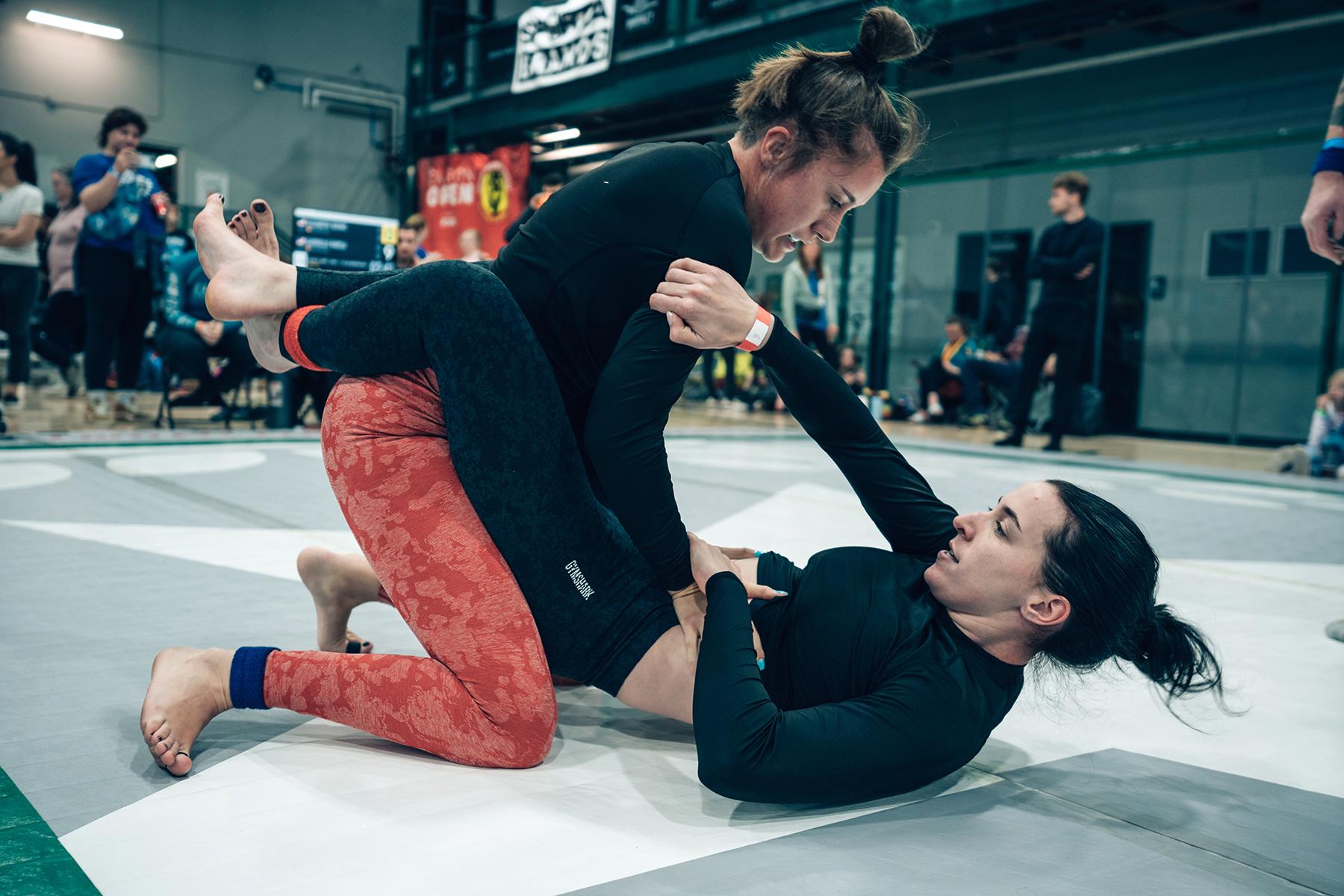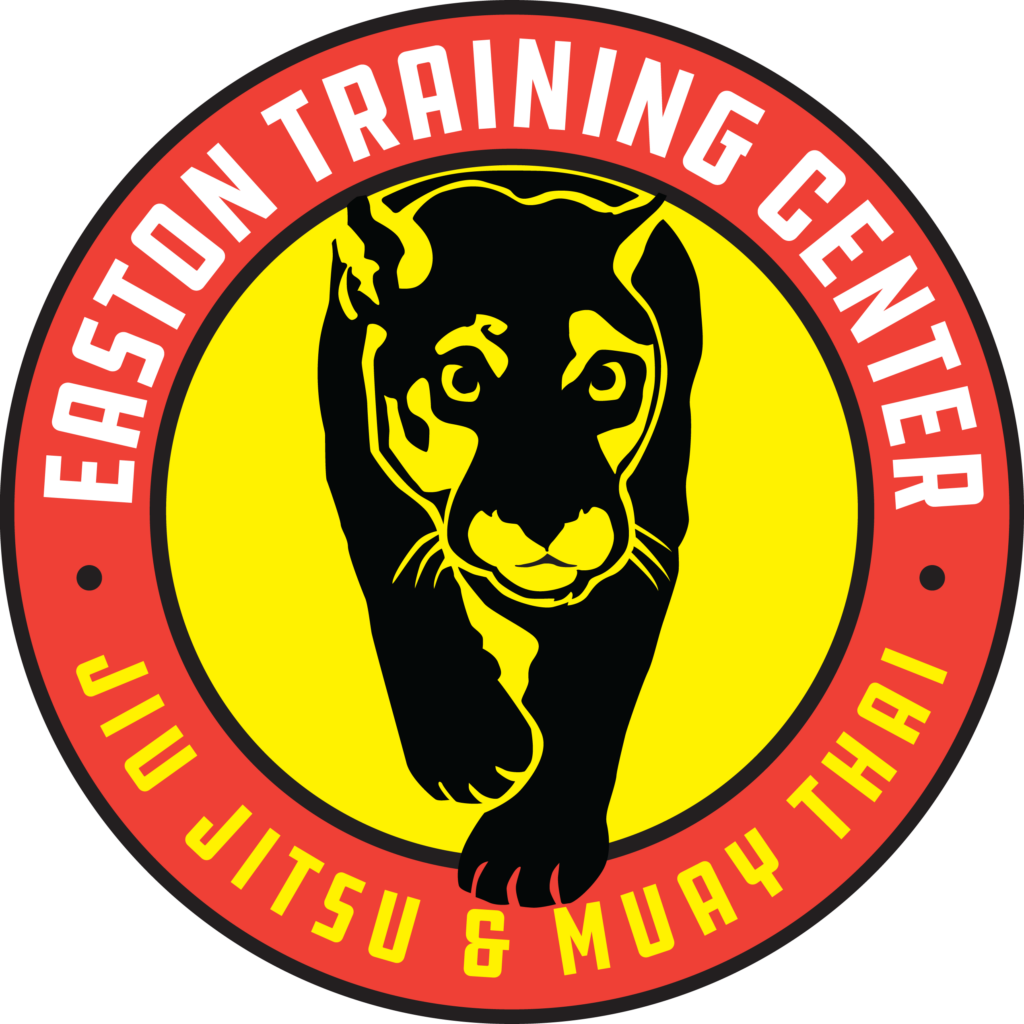Through living a hybrid lifestyle between primitive skills and homesteading, Easton students Gelsey Malferrari and Neal Ritter take the mindfulness we aim for in martial arts and apply it to every aspect of how they connect to the world – from how they eat and the tools they use, to how they move across the landscape and give back to the community.
Together, the husband-wife duo run the Laughing Coyote Project– a non-profit that teaches primitive skills to people of all ages through homeschool programs, teen expeditions and workshops from their homestead farm in Longmont, Colorado.
Since day one, they’ve built a life together around building, creating, and practicing primitive skills. When they started dating, Neal was living in the woods and learning to build his own shelter. When Gelsey visited him, he showed her how to make cordage (plant rope) from milkweed by twisting its fibers. She loved it.

Having grown up around art her entire life, including a pottery business her parents owned and sustained the family with, Gelsey had a passion for creating and spent a lot of time working with clay and in the studio. Her childhood house sat behind 100 acres of land which doubled as a sort of community garden, so the natural landscape already felt like home to her.
In college, when materials for an art class she wanted to take were too expensive, she decided to make them herself instead. Gelsey learned how to make her own watercolors, collecting pigments from the landscape, making the binder that binds the pigment to paper, and even the paper itself. As part of her college thesis, she created her own curriculum, made all her own supplies, and worked with the community by helping a group of high school students source their own clay on school grounds, process it and learn how to work with it.
The idea to start their own school emerged while traveling through Latin America together. Encountering incredible cultures, extreme poverty, and a completely different way of being in the world inspired them so much that they began dreaming of starting a school grounded in experiential learning. They wanted to build a life that connected to the earth and to our roots in a way that everyday American culture doesn’t necessarily lend itself to.
Today, Neal and Gelsey teach ancestral living skills like natural building, homesteading, food preservation, wildlife tracking, and bushcraft – using resources and materials found in the wilderness to survive and thrive outdoors, from plant fiber to wood, stone, steel and antler. They use natural movement, intuitive wisdom, and remind us to appreciate the most rudimentary parts of the process.

Back to the basics

From picture books about people living in the wilderness to trying to learn fire-by-friction from books, Neal has always had a passion for ancestral skills and nature. His education really took off when he began attending classes and primitive skills gatherings where instructors from all over the world shared their knowledge, forging lifelong connections and shared skills.
Through his journey of self-education, Neal also learned a lot about his own learning style, specifically that he needs to learn from other humans, rather than books or YouTube. Gelsey had a similar revelation at 17, when she took a job as a snowboard instructor and realized she loved teaching.
Seeing how every student learns and hears things differently, how different teaching methods resonate with different learners, and how to find flexibility in her teaching amid a set curriculum felt exciting and rewarding.
Neal also knew he loved teaching early on. In high school, he briefly worked as a tutor to help boys with learning difficulties and developed a style based around a lot of movement activity to help them with reading, writing and math. The hands-on approach he and Gelsey take in their classes and workshops reflects this methodology as students learn through immersive, on-site experiences that have them doing things like feeling treebark blindfolded to identify tree species.
The fundamental belief shared by Gelsey and Neal, which fuels Laughing Coyote, is that connecting to our roots through ancestral living skills – hunting, gathering, and even raising food in an agricultural setting – helps us express the fullest extent of our humanness.

“It removes so many layers of distraction and disconnection,” says Neal, “from what we actually need to live.”
From growing their own food and foraging in the landscape to killing an animal for food and tanning the hide to make clothing out of its skin, physically putting ourselves into the process gives us a direct relationship with what it takes to live in the world. It allows Neal and Gelsey to value what they put into their bodies in a different way and creates more understanding, respect, and appreciation for the world.
Last year, Neal had the opportunity to spend three weeks in northern Tanzania with a group of hunter-gatherers, the Hadza, hunting, making bows and arrows and participating in their lifestyle. Connecting to this hunter-gatherer mindset and skillset, and practicing the lessons like bow-making, arrow-making, tracking and foraging allows Neal to continue developing and sharing this lifestyle which he and Gelsey have raised their children, Lutreo and Fianna, within.

“Our bodies still think that we’re hunter gatherers,” says Neal. “We really haven’t evolved that much in the last 300,000 years, so we’re born in this world expecting to hunt animals, climb trees looking for honey and eat wild berries. Something about practicing these ancestral skills fills people with satisfaction.”
Connecting through natural movement

Neal began training at Easton in 2019 after the couple put their now 10-year-old son Lutreo into the Kids program. Wanting to better support her son in his experience, Gelsey began training Jiu Jitsu in 2020; in 2021, their six-year-old daughter, Fianna, joined them. Today, both Neal and Gelsey hold a blue belt in BJJ and Neal also has an orange shirt in Muay Thai.
The body-awareness that martial arts offers aligned with the natural movement piece of Laughing Coyote and the family’s lifestyle, as did the purpose, passion and community that comes along with it.
Within natural movement, there are two main categories: how we move across the landscape and how we manipulate the world. Incorporating a diverse range of movements — from running, walking and crawling to twisting and jumping — helps keep our joints healthy while also keeping us balanced, strong and capable.
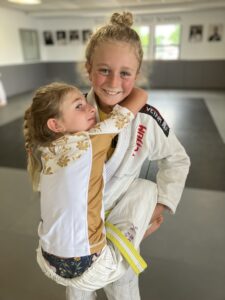
By manipulating the world around us through carving, throwing [clay], sewing, weaving, cutting and archery, we use our hands and feet to engage with and craft what’s around us.
Just as interacting with the world in ways that are similar to what we evolved to do as hunter-gatherers keeps us mentally sharp, happy and healthy, so does expressing other things in our nature – like fighting.
“Human beings fight”, says Neal. “We’ve always fought. We could put a value judgment on that or we can say, humans fight. We fight by sticks and rocks, by grappling, by hitting each other.”
In many ways, grappling and striking can represent some of the most foundational, expressive elements of what a human body does. For the family, martial arts has become not just a way to cultivate physical strength and confidence, but an extension of their core philosophy that connects them even more to their roots and the community around them.
Neal’s favorite part about martial arts is that whether you’re a naturally violent person – expressed through high energy, aggression and a competitive streak – or a bit more tentative, training martial arts creates space to explore those parts of ourselves in a productive way that fosters community and develops skills, while also giving us the confidence to face challenges in life.
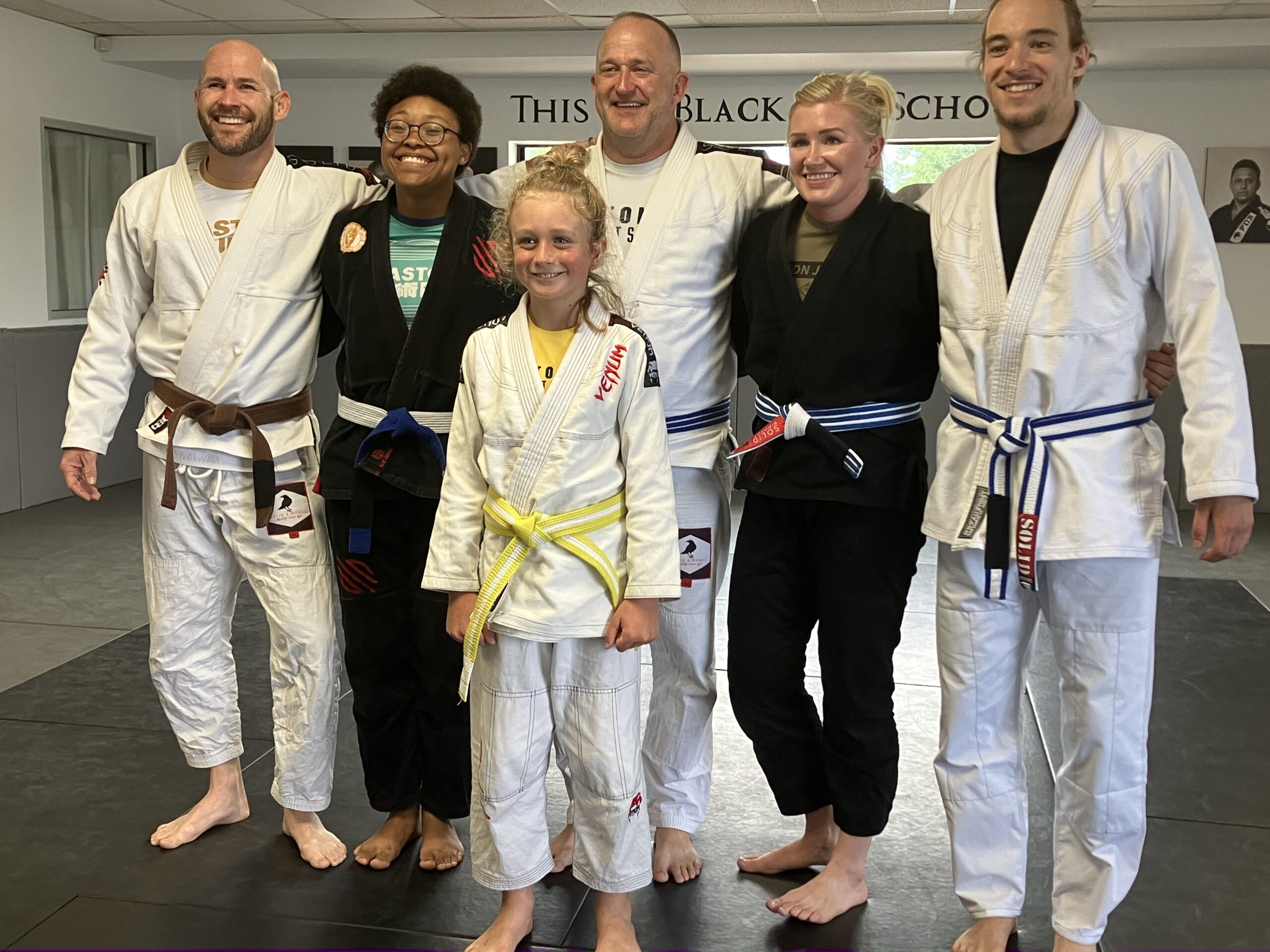
Training fuel for a primitive life
How do you fuel when your lifestyle requires you to fuel everything yourself? Whereas a lot of people will fuel their bodies specifically for Jiu Jitsu or Muay Thai if they’re training a lot or have a competition coming up, Gelsey and Neal have to fuel constantly.
“I’m asking my body a lot all the time,” says Gelsey, “I have to continuously feed it well and in a certain way. This is one of the reasons we’ve chosen the lifestyle we have – we believe very strongly in what we put in our bodies.”
Even when they’re not on the mats, the work they do at home all happens outside in the weather and requires them all to stay very active. Due to this, the Ritter-Malferrari family focuses more on hydration than anything when the training picks up.
To replenish electrolytes, they make a simple home blend with honey, lemon juice and a pinch of salt. Gelsey also likes Scratch electrolytes to throw into her water to avoid the after-training crash, and both teachers love Kion supplements like aminos for extra support. (Angelo, who started the supplement company, also sits on the board of trustees for Laughing Coyote!)
Neal also likes Jocko Molk as a supplemental protein for when he needs to replenish energy without adding bulk.
With a lifestyle that demands their bodies to perform at a higher level, and shaped in such a specific way largely due to food, Gelsey and Neal feel very strongly about what they put in their bodies, and make sure to fuel themselves really well all the time.

Eating on a homestead
The family started homesteading to obtain as many calories as they could from the land, including raising their own meat, keeping chickens for eggs, hunting and fishing, and growing lots of vegetables.
“When we’re not teaching or doing BJJ,” says Gelsey, “we’re homesteading. Making yogurt, kefir, milk, gardening all day… Canning and preserving starts in June or July and stops at the first frost.”

The family makes their own sourdough bread and pizza crust, and the animals provide all the dairy for things like yogurt, raw milk butter and ghee. Their morning ritual includes sourdough bread with their homemade butter and fried egg from their chickens on top, fried in ghee, salt and pepper.
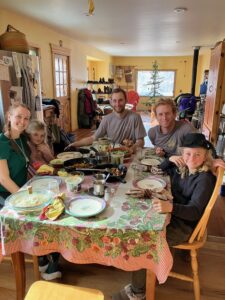 Along with pickled foods like sauerkraut, Neal, Gelsey and the kids get their probiotics (and delicious cold beverages) from homemade kombucha and jun, infusing it with whatever fruits they have in season. Jun, a fermented drink similar to kombucha but cultured with green tea and honey instead of black tea and sugar, can also undergo a secondary fermentation by putting in more fruit and herbs to add another flavor.
Along with pickled foods like sauerkraut, Neal, Gelsey and the kids get their probiotics (and delicious cold beverages) from homemade kombucha and jun, infusing it with whatever fruits they have in season. Jun, a fermented drink similar to kombucha but cultured with green tea and honey instead of black tea and sugar, can also undergo a secondary fermentation by putting in more fruit and herbs to add another flavor.
When it comes to purchasing foods, Neal and Gelsey are always looking to purchase as locally as they can from brands made here in Colorado, if not made by other farmers.
The best part about the homestead’s clean diet? Using real ingredients and whole foods for everything means that when they eat sweets, they don’t use substitutes like gluten free flour or coconut sugar.
“If I’m doing sweets,” Gelsey says, “I’m going to do them right and enjoy them, and just not do as much of them.”


